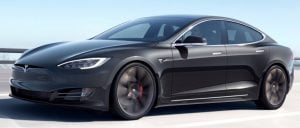
Tesla Wants to Use Radar Sensors to Detect Kids Left in Hot Cars

New Tesla features are being released and discussed constantly, and in the newest iteration of these features, the electric car giant is reaching out to the FCC for help.
According to Reuters, Tesla requested approval from the Federal Communications Commission (FCC) on Friday for a short-range interactive radar motion sensor. The high-technology sensor is intended to prevent children from being kept inside hot cars and to help improve the efficacy of anti-theft systems.
Tesla’s need to request approval from the FCC is due to the current rules about millimeter-wave sensors such as this – primarily, the sensor requested operates at higher levels than existing FCC rules permit.
Using three receiving antennas and four transmitter antennas, the millimeter-wave radar is both less invasive and more effective than other sensing systems like cameras or in-seat detection systems.
And animals please! > Tesla wants to use radar sensors to detect kids left in hot cars… https://t.co/t6PFMj9s3m pic.twitter.com/QSxY6Egnut #Tesla #Tech #FutureCars #Innovation
— Louise O'Hara (@louiseohara) August 21, 2020
Many users on Twitter also mentioned the prospect of keeping their pets safe with this radar motion sensor, though it is unclear whether the technology will apply to animals at this point in time, or if it will simply be designed to work for children. Teslas currently have a ‘dog mode’, which allows a message to be left on interior displays to let people know air conditioning is on for pets.
The FCC will remain open to public comment on Tesla’s request until September 21st, 2020. In 2018, a similar request was granted by the FCC for Google, though in March another FCC approval was requested by Valeo for a different children-monitoring device and is still pending.
Whatever the case may be, Tesla’s request seems like a positive feature at face value, though it is unclear why the millimeter-wave sensor needs to operate at higher levels than currently approved. We can only assume that, in spite of this, the new feature will increase safety in the future, and not put our children in harm’s way.

